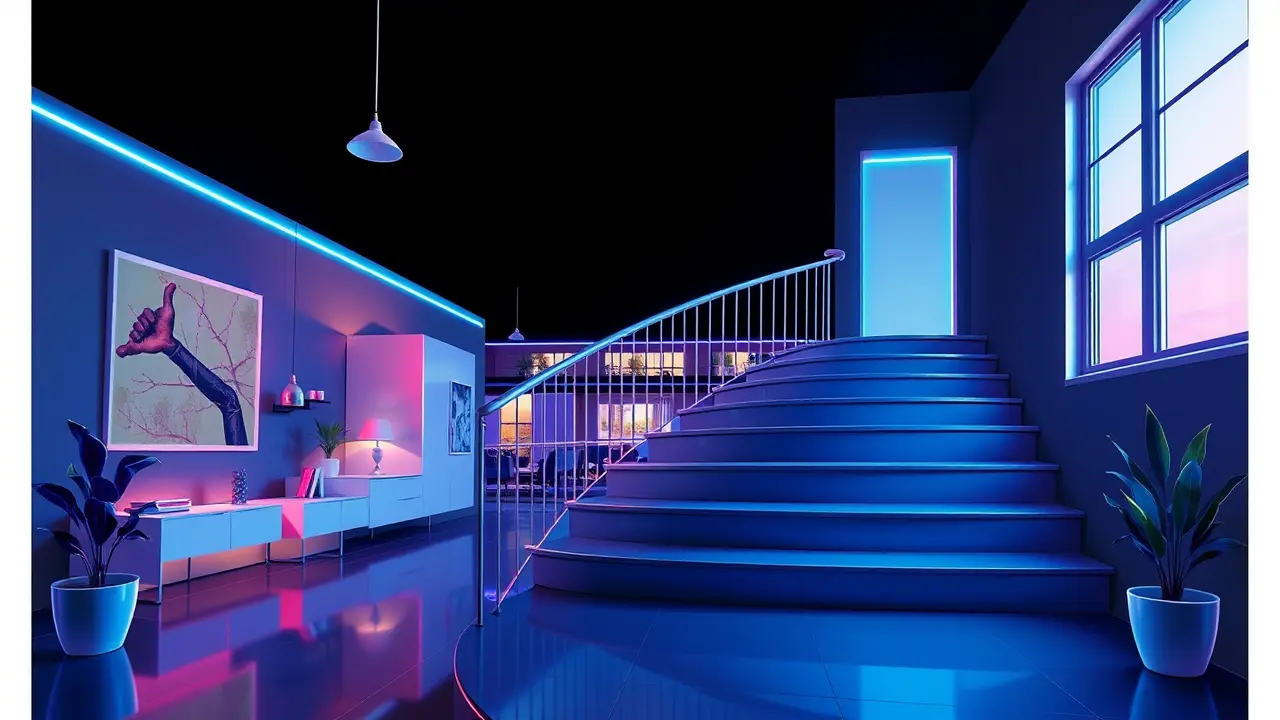
Otherreal estateSustainable Architecture
Interactive segmented house reconfigures with five rotating modules.
SO
Sophia King
7 hours ago7 min read4 comments
The house of the future, it seems, has finally learned to dance with its environment. Michael Jantzen’s latest architectural provocation, an interactive segmented home composed of five distinct rotating modules, isn't just a static structure; it's a kinetic, almost sentient partner to the natural world.Each module, a self-contained volume of living space, pivots and reorients itself autonomously in response to a symphony of external stimuli—the caress of sunlight, the push of the wind, the percussion of rainfall, and the ever-changing tableau of the surrounding views. This isn't mere automation; it's a form of architectural biomimicry, a building that breathes and shifts with the rhythms of the day and the whims of the weather, creating a dynamic, fluid floorplan that traditional, rigid construction could never permit.Imagine waking up in a bedroom that has slowly tracked the dawn, ensuring the first rays of sun gently warm the room, or a living area that rotates away from a blustering afternoon wind to create a sheltered lee, all while framing a perfect, cinematic view of a distant mountain range. The implications for our relationship with our living spaces are profound.We are moving beyond the smart home, which simply obeys commands, to the responsive home, which anticipates needs. This concept feels like a natural, breathtaking evolution from the early experiments of modernists who sought to blend indoor and outdoor space with glass walls and open plans.Jantzen’s house takes that philosophy and injects it with kinetic energy, dissolving the boundary not just visually but physically and experientially. For creatives and designers, this is a paradigm shift as significant as the transition from physical drafting tables to AI-powered plugins in Figma; it’s a tool that collaborates with the user and the environment.The technology driving this—likely a network of environmental sensors, silent electric actuators, and sophisticated machine-learning algorithms—must be both robust and elegantly unobtrusive, hidden within the architecture like the nervous system of a living creature. One can envision a future where such adaptive architecture becomes commonplace, reducing energy consumption by optimizing solar gain for heating or creating natural cross-ventilation for cooling, a powerful statement in an era of climate consciousness.Yet, it also raises fascinating questions about the psychology of habitation. Would we feel a loss of control in a home that constantly reconfigures itself? Or would we develop a deeper, more symbiotic connection to a structure that so clearly embodies the passage of time and the state of the natural world? The house becomes a canvas upon which the weather paints its daily masterpiece, and we, the occupants, are both the audience and participants in an ever-unfolding performance of light, air, and landscape.
#featured
#architecture
#sustainable design
#rotating modules
#interactive house
#future homes
#Michael Jantzen
Stay Informed. Act Smarter.
Get weekly highlights, major headlines, and expert insights — then put your knowledge to work in our live prediction markets.
Related News
© 2025 Outpoll Service LTD. All rights reserved.









